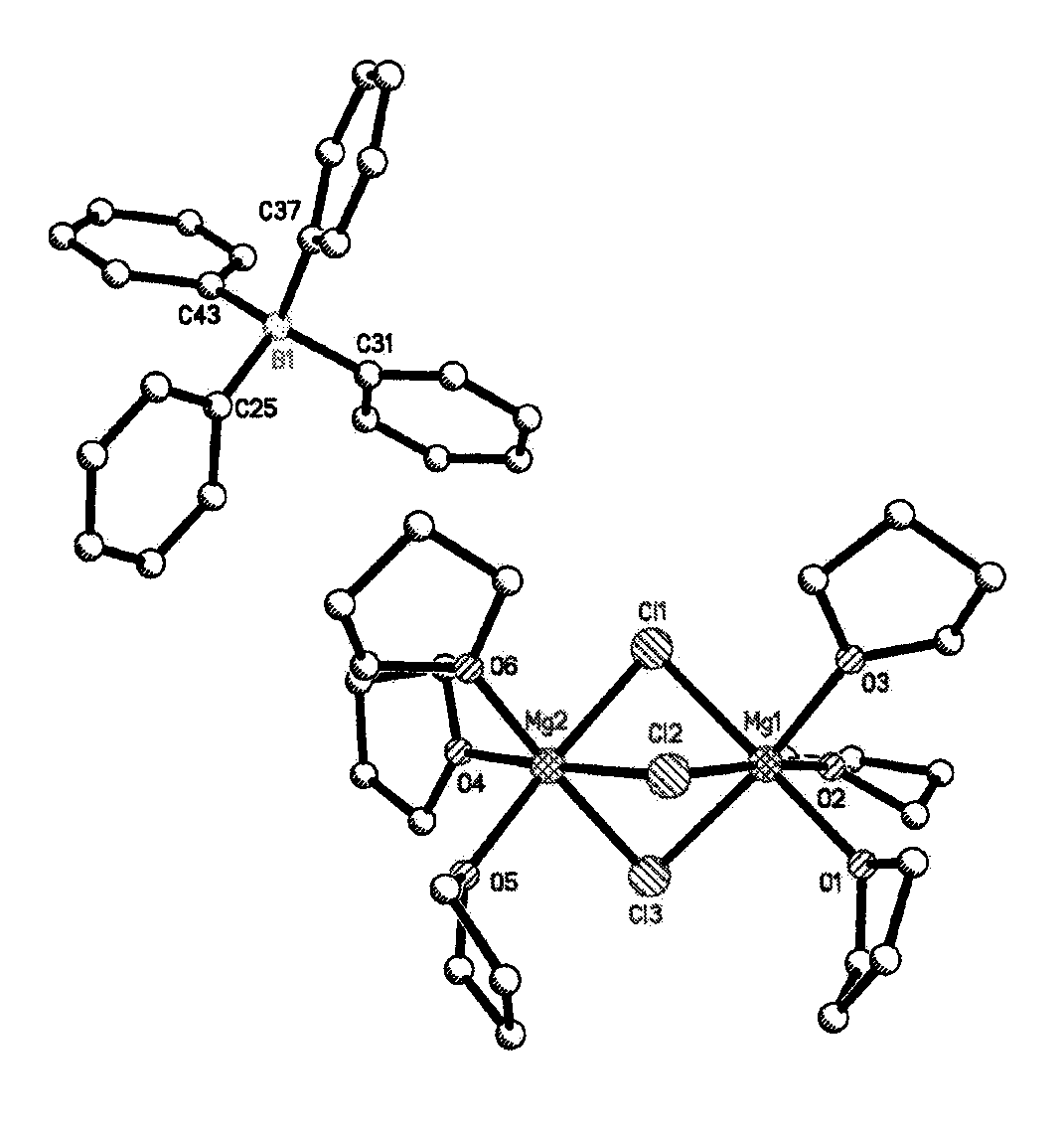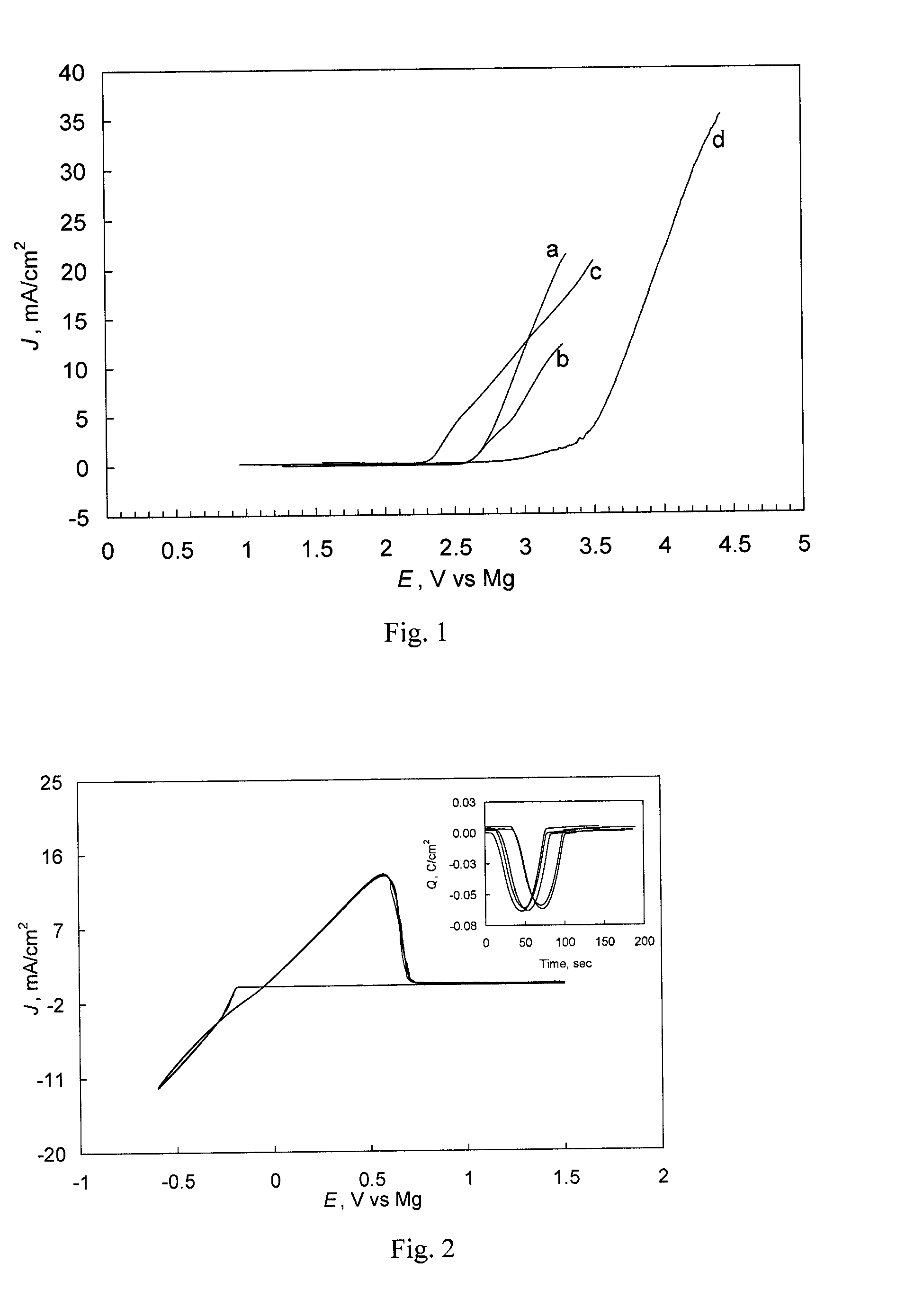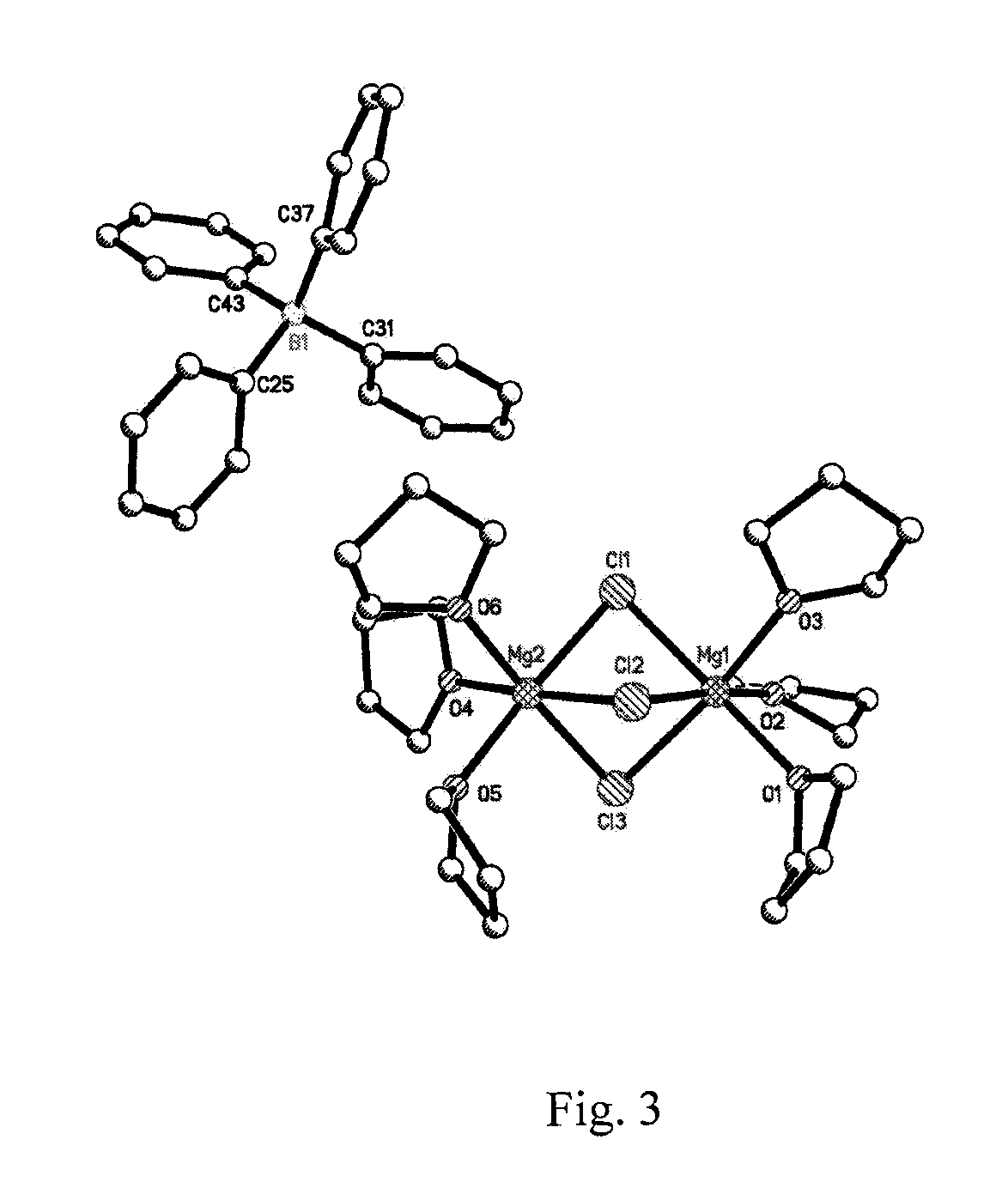Electrolyte for magnesium battery
a magnesium anode and electrolyte technology, applied in the direction of non-aqueous electrolyte cells, cell components, group 3/13 element organic compounds, etc., can solve the problems of unreported compatibility with the electrolyte system, unsuitable cathode material, and inability to meet the requirements of magnesium anode cells, etc., to achieve low environmental impact and safe handling
- Summary
- Abstract
- Description
- Claims
- Application Information
AI Technical Summary
Benefits of technology
Problems solved by technology
Method used
Image
Examples
examples
Synthesis of (Mg2(μ-Cl)3.6THF)(BPh)4 electrolyte
[0054]In an argon-filled glovebox, PhMgCl (2 M solution in THF, 3.80 mL,) was mixed with BPh3 (0.5 M solution in THF, 10 mL) in a 20 ml screw capped vial. The vial was immediately capped and vigorously stirred for 24 hours. The crystals were formed by slow diffusion of anhydrous hexane (Sigma-Aldrich, 15 mL) and were washed with hexane and dried under vacuum to furnish off white crystalline product (Mg2(μ-Cl)3.6THF)(BPh)4.
Crystal Summary of (Mg2(μ-Cl)3.6THF)(Bph4)
[0055]Crystal data for C48H68BCl3Mg2O6; Mr=906.80; Monoclinic; space group P21 / c; α=16.4151(16) Å; b=16.5787(16) Å; c=18.5617(19) Å; α=90°; β=109.3640(10)°; γ=90°; V=4765.6(8) Å3; Z=4; T=120(2) K; λ(Mo-Kα)=0.71073 Å; μ(Mo—Kα)=0.265 mm−1; dcalc=1.264 g.cm−3; 76313 reflections collected; 11872 unique (Rint=0.0351); giving R1=0.0345, wR2=0.0860 for 9917 data with [I>2σ(I)] and R1=0.0443, wR2=0.0925 for all 11872 data. Residual electron density (e−. Å−3) max / min: 1.148 / −0.351.
An a...
PUM
| Property | Measurement | Unit |
|---|---|---|
| energy density | aaaaa | aaaaa |
| negative reduction potential | aaaaa | aaaaa |
| voltage | aaaaa | aaaaa |
Abstract
Description
Claims
Application Information
 Login to View More
Login to View More - R&D
- Intellectual Property
- Life Sciences
- Materials
- Tech Scout
- Unparalleled Data Quality
- Higher Quality Content
- 60% Fewer Hallucinations
Browse by: Latest US Patents, China's latest patents, Technical Efficacy Thesaurus, Application Domain, Technology Topic, Popular Technical Reports.
© 2025 PatSnap. All rights reserved.Legal|Privacy policy|Modern Slavery Act Transparency Statement|Sitemap|About US| Contact US: help@patsnap.com



